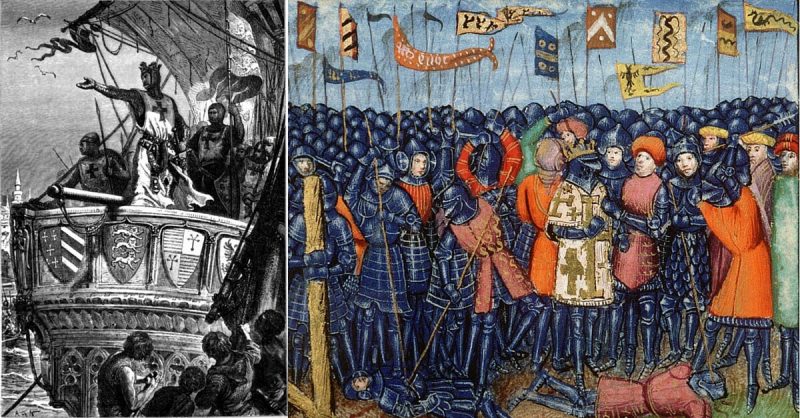The Crusades, Christian Europe’s attempt to drive back other nations and religions, were among the most ambitious and badly thought out campaigns in military history. Some were successes, others disasters, and all were marked by massive bloodshed. Though they were shaped by far more than battles, those battles can help us define and understand the crusades.
Battle of Civetot, 21 October 1096
When the first Crusade was called, summoning Christian knights to retake the Holy Land from Muslims, it immediately got out of hand. It had been intended as an endeavour for disciplined warriors led by Europe’s nobility, but the first force to set out was a mob of peasant idealists and zealots led by Peter the Hermit. This People’s Crusade proved destructive to the regions they passed through and ineffective in battle, being massacred by the Turks at the Battle of Civetot. The Crusades would not be a war for humble men.
Sieges of Antioch, 21 October 1097 – 28 June 1098
The fighting for Antioch was a sign of what was to come for the Crusaders. Far from home, and laying siege to a hostile city, they ran short of supplies and found themselves politically divided. Though the city eventually fell, within days it was once again under siege, this time by the Turks. The Crusaders drove them off in a pitch battle, amid visions of saints, but the city’s capture came at a terrible cost.
Storming of Jerusalem, 15 July 1099
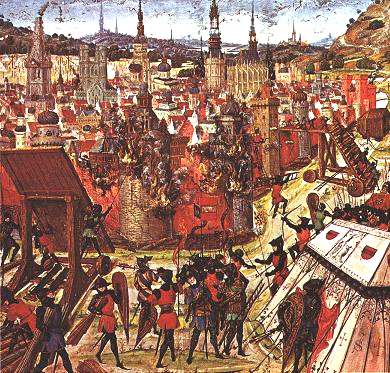
The capture of Jerusalem exemplifies the horror of the Crusades. Having reached their goal, the Crusaders besieged and then stormed the city. Thousands of its inhabitants were massacred in a frenzy of blood lust, greed and religious fervour. The Crusades left no room for compromise or peaceful coexistence – outsiders would be driven back or annihilated.
Siege of Tripoli, 1102 – 12 July 1109
The Crusades were more than a religious movement. They were also political, purging Europe of destabilising noble younger sons, who then set up new nations in the Middle East. The extended siege of Tripoli by Christian forces saw the city become yet another crusader state, amid arguments among Christian leaders over who should rule it. It also shows the reality of medieval sieges – long periods of waiting and starvation, followed by brutal pillaging if the city fell.
Battle of the Field of Blood, 28 June 1119
Though the Crusaders had not been universally successful, they took much territory from the Muslims. Things started to change at the Battle of the Field of Blood, where the Turkish general Ilghazi utterly destroyed a Crusader force under Roger of Antioch. The fight back had begun.
Capture of Edessa, 24 December 1144
Though the Muslims had successes after the Field of Blood, little territory changed hands. This changed on 24 December 1144, Turkish general Imad ed-Din Zengi brought down a chunk of the walls of Edessa and stormed the city. A dramatic example of how undermining could win a siege, it saw the Muslims start to reconquer the Crusader States.
Siege of Damascus, 1148
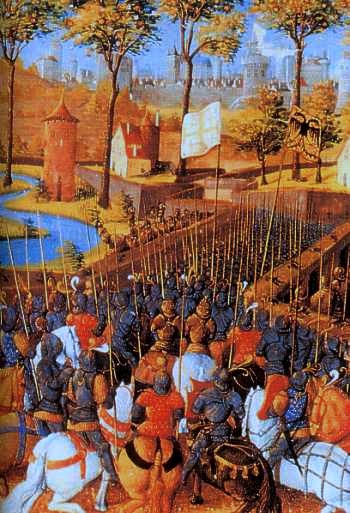
After Edessa, the Second Crusade was called. An army whose leaders included King Louis VII of France marched toward expected glory in the Holy Land. Instead they failed abysmally, losing thousands of men in the failed Siege of Damascus, and eventually giving up. This was characteristic of the whole period – no other crusade would be as successful as the first.
Battle of the Horns of Hattin, 4 July 1187
Saladin was the most famous Muslim commander the Crusaders faced, both at the time and since. Advancing on Jerusalem, he outmanoeuvred and surrounded the Christian forces at the Horns of Hattin, utterly defeating them. This led to the recapture of Jerusalem on 2 October. The city would change hands several more times, but its days as a Crusader bastion were over.
Battle of Jaffa, 5 August 1192
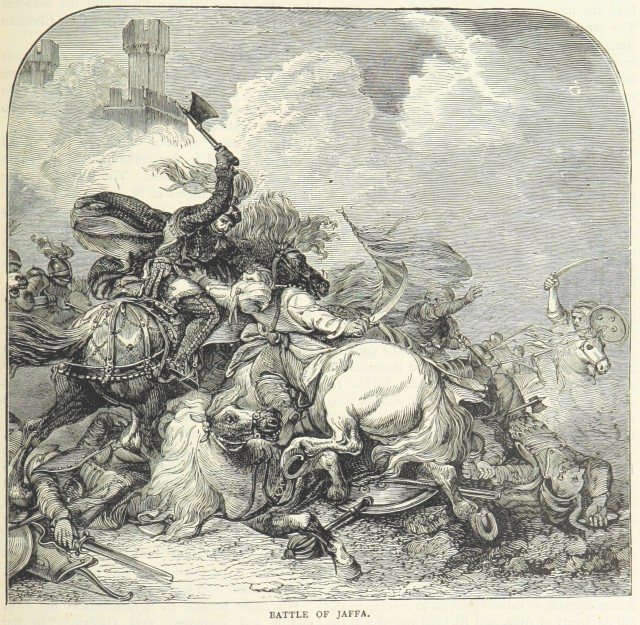
Saladin met his match in Richard I of England, known as the Lionheart. Richard had a great victory at Jaffa, but the fighting left both him and Saladin exhausted, leading to a negotiated peace. Pragmatism was replacing ambition and fanaticism. Meanwhile, Richard’s absence on crusade, like that of other kings, led to the neglect of his home country.
Sack of Béziers, 22 July 1209
In time, the Crusades turned against other targets, including eastern European pagans and the Spanish Moors. Even dissident Christians came under attack with the launch of the Albigensian Cruade against the Cathars of southern France. In 1209 Crusaders arrived to besiege Cathar Béziers. Before they could even begin the siege proper, a failed raid from inside the town let Crusaders get through a gate over the Orb River. The city fell, thousands were massacred and Béziers burned. Christian Europe was turning its crusading violence upon itself.
Siege of Acre, 11 April to 18 May 1291
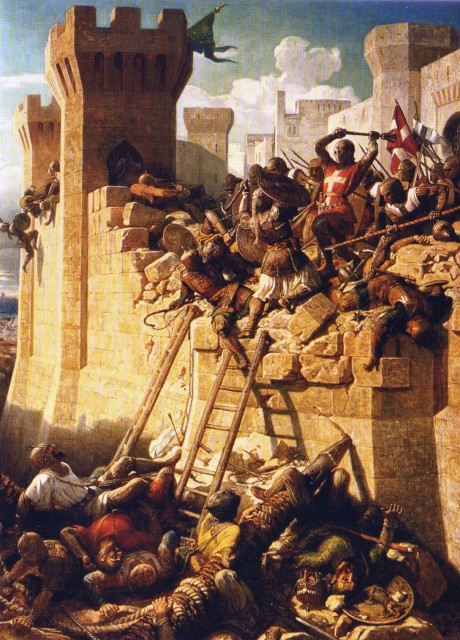
By 1291 the Christian armies had been largely driven out of Holy Land. The final nail in the coffin was the fall of Acre to the Sultan Khalil. After besieging the city with 75,000 men and a collection of vast siege machines, he captured it on 18 May. The defenders were massacred, and the last major crusader outpost in the Holy Land was destroyed. In the following days, the crusaders withdrew from the few towns they still held. The Crusader States were over.
Siege of Granada, April 1491 to 2 January 1492
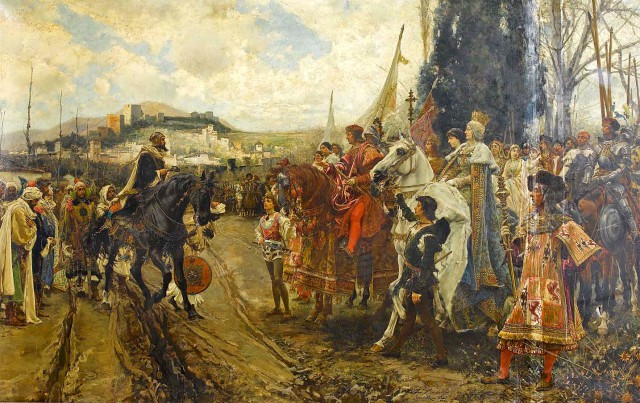
Despite failures in the Holy Land, the crusading ideal lived on. It was particularly important in the Iberian Peninsula, where Christian monarchs spent centuries driving back their Arab neighbours. The Siege of Granada was the final action in this series of wars, known as the Reconquista, which left all of Spain and Portugal in Christian hands. The borders of Europe had been drawn, as much by crusading armies as by culture or cartography. This was now the edge of Christendom.
